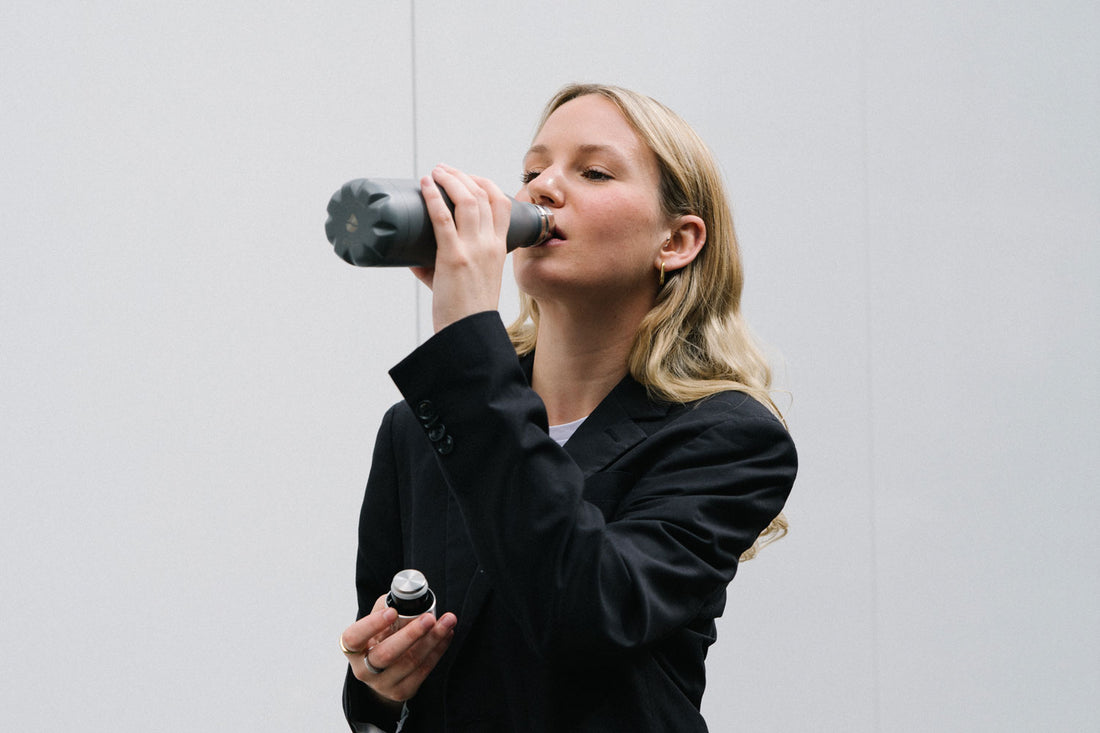Price question: What do you do with a water bottle? Exactly: You drink from it. And with that, today's article is already over. After all, you don't need more instructions for that, right?
I thought so too until I started getting into the subject of drinking. When it comes to hydration, there are some misleading assumptions that we’ve picked up somewhere along the way.
We also tend to stop listening to our own bodies. And so, you can even get something as simple as drinking wrong. That's why you'll find a small instruction manual here.
Your body shows you what it needs - most of the time.
Much better than any table or drinking app is your own body sense. If the body needs water, it sends an unmistakable thirst. But even before this clear sign, you notice that it's harder to concentrate, and you may get a headache. A dry throat after exercise is also a clear indication.
If you have drunk enough, swallowing becomes increasingly difficult. The body slows down fluid intake and signals that it is "full." If you're not quite sure, a glance at the toilet can help: light-colored urine and regular urination are signs of good hydration. If you haven't peed for a suspiciously long time, like when hiking, it's a bad sign, just like dark urine. In that case, it's time to grab the bottle.
However, there are exceptions to this. Caution is especially needed in old age. The nerves in the mouth and stomach also age and don't reliably report thirst to the brain. Stress and other strains can also affect thirst perception. In such cases, a drinking plan makes sense. For example, you can aim to empty your FLSK liter bottle at least twice a day.
How much fluid you need changes from day to day.
Whether these two liters are the right amount for you cannot be answered in general. Roughly, the rule of thumb is 0.3 liters per 10 kilos of body weight. However, your need depends on many factors: How do you eat? How much do you move? What is the ambient temperature? Is your body healthy? Fever, breastfeeding, sweating, sports, dry air, and salty foods increase your water needs.
For some, two liters are great, while others may need six. So what should you do? See above: listen to your body's signs and choose the size of your water bottle accordingly.
It doesn't always have to be water.
The body loves still water. This is true because it can process this water easily and effortlessly. But carbonated water is also great if your stomach can handle it. Water in these two pure forms should be your main source of hydration. But water is also in food, such as fruits and vegetables (or their juices). You can also "eat" water, for example, with a snack from the muki Snackpot.
This is how much water is in food.
-
Cucumber: Water content of 96% - 100g contains 96ml water
-
Celery: Water content of 92% - 100g contains 92ml water
-
Strawberries: Water content of 90% - 100g contains 90ml water
-
Yogurt: Water content of 82% - 100g contains 82ml water
-
Hard cheese: Water content of 56% - 100g contains 56ml water
By the way, you can also count your daily coffee or tea. The thesis that these hot drinks dehydrate has long been refuted. But there's no green light for alcohol. It does indeed drain water from the body and also delays the body's ability to absorb water again after sweating.
Our recommendation is, therefore, always to have a large bottle of water with you and enjoy some variety in a smaller FLSK water bottle. The smallest FLSK water bottle with 350ml is ideal for coffee or juice. Also, follow the old trick: have a glass of water with every alcoholic drink.




